
Zoglet
Members-
Posts
124 -
Joined
-
Last visited
-
Days Won
1
Zoglet last won the day on October 7
Zoglet had the most liked content!
Profile Information
-
Gender
Male
-
Location:
Philadelphia, PA, United States
-
Interests
Japanese matchlocks and shortswords
Profile Fields
-
Name
Nicholas Z
Recent Profile Visitors
1,450 profile views
Zoglet's Achievements
-
I find it incredibly suspicious, especially looking at the condition of the nakago and the fact that the blade appears to be shinogi-zukuri, that the blade would be anything over 200 years-old, if even that old or unaltered. So far, I've only seen one example of a short blade in that shape, being a shinshinto Kaifu ko-wakizashi with a nagasa of 34.85 cm. I'm sorry to burst your bubble on this one. Best regards, Zoglet
-
At the end of the day, due to the low resolution of the pictures, it's difficult to tell for certain whether the straighter grain truly is masame or merely running o-hada, however, masame doesn't always indicate Yamato influence, as we also see it in examples of Awataguchi blades from the mid-Kamakura Period, namely Kunitsuna, who may have instructed Shintogo Kunimitsu on sword-crafting. As such, it may be early to jump to Hasebe Kunishige, although Markus's suggestion may indicate that Shintogo Kunishige may be an earlier form of Hasebe's work, so that lends some credence to your suggestion. Overall, I'd stay more conservative on this issue until I can more readily see the jigane on this piece.
-
Looking at the oshigata you sent, Kunishige seems a bit promising, especially looking at the "Kuni" character. A lot closer to the standard horizontal three-line radical we see in works from the Awataguchi and Rai Schools. The angle of the diagonal radical also appears correct compared to the angle of the Fujishiro Koto volume tanto (the DTI one), at least to my eye. Thanks for sharing, Lewis!
-
As an added reference, was also able to locate a mei of a ken signed "Sahyoe no Jo Fujiwara Kunimitsu" and dated to either Showa 1 or Showa 10 (mei is corroded at the date) with the similar features to the atypical Shintogo Kunimitsu mei. Photo is displayed below.
-
I completely agree. I was just replying to this comment by Michael. Thanks for commenting! Nicholas
-
I agree that seeing the TH papers for this blade would go a long way into helping us determine the legitimacy of the appraisal, alongside determining whether the "Shintogo" element is official from the NBTHK or added by the dealer. Going into another direction, I don't believe the blade is feasible for Rai. Looking at a color photo I found of the DTI Shintogo tanto, We see a very tight ko-itame hada with what appears to be minimal burls of mokume and primarily what appears to be masame. The appearance is also generally "wet" like Kunimitsu's peers in the Awataguchi School. The koshi-hi on the tanto-ura also screams Awataguchi to me, since we see that style in some tanto by Kuniyoshi and Norikuni (daito too, but in this case, we are discussing tanto). Additionally, the mei is extremely atypical for Rai-mei, as has been discussed above. I agree with you, Michael, that blades of greater rarity are of more value to me, so this work generally piques my interest, especially as an item that requires more research. Whoever ends up with this work has their work cut out for them. All the best, Nicholas
-
I agree with a protential daimei being possible in that instance, but to this day I've not seen a Kunihiro sign using anything except the typical left-handed "Kuni" mei. Even looking at this work, the same curve in the lower right radical, alongside the horizontal crown in the "Mitsu" kanji. Looking at handwriting, it almost makes me wonder whether A.Kunimitsu and S.Kunimitsu had a closer relationship than just originating from the Awataguchi School (perhaps made dai-mei for one another). Of course, this could be merely a smith I'm unfamiliar with from the Shintogo/Ko-Soshu atelier, but I can't help but admit this resemblance in writing has me a bit perplexed. Good luck to everyone in determining this blade! Nicholas
-
If I may butt in, the mei on this blade has a remarkable similarity to that of Awataguchi Sahyoe-no-jo Kunimitsu, from the lack of an s-like line in Kuni, to the wider, thinly cut square, and a slightly rounded lower right radical in the "Mitsu" kanji. Additionally, although the hamon is narrower in the Shintogo listed above, the blade does bear a resemblance to (especially in the jigane) this Awataguchi Kunimitsu signed tanto. I hope I'm not treading too far into unfamiliar waters. Just wanted to share some observations I saw looking at the mei and workmanship. Best Regards, Nicholas
-
Glad to help, man!
-
I have the nagasa, sori, and motohaba. Nagasa: 78.4 cm Sori: 1.4 cm Motohaba: 3.17 cm
-
I have closer photos, although I'd like to keep the owner anonymous, he's not protested me showing the blade. I'll send photos once I'm back home. All the best, Nich
-
I am aware of a 78.4 cm hotondo-ubu and machi-okuri hira-zukuri tachi by the Ko-Uda School. It's very likely this sword was originally an odachi when it was forged. (sword is in a private collection) Best Regards, Nich
-
19 year old on this forum. Started last year, but learned a lot since then!







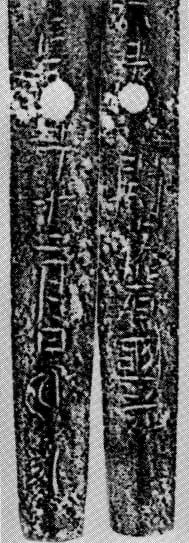
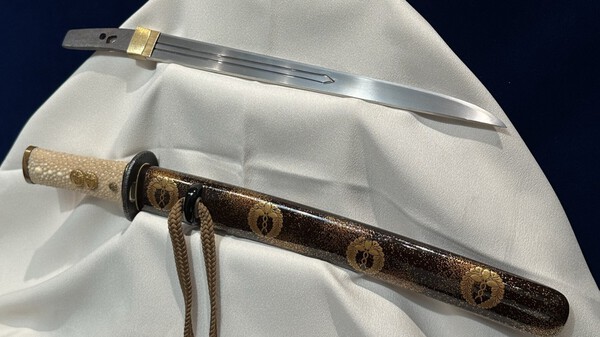
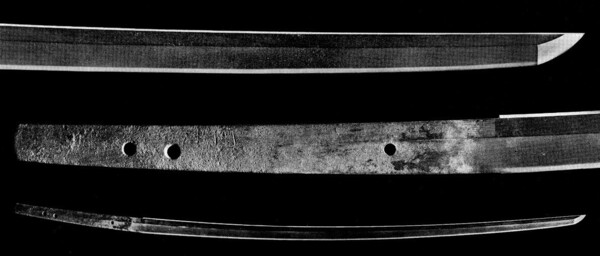
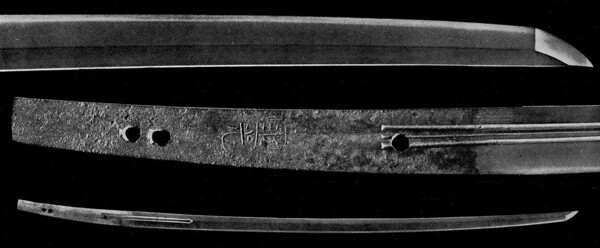
.thumb.jpg.00d3f57eed3df9b65764f951f870abf1.jpg)


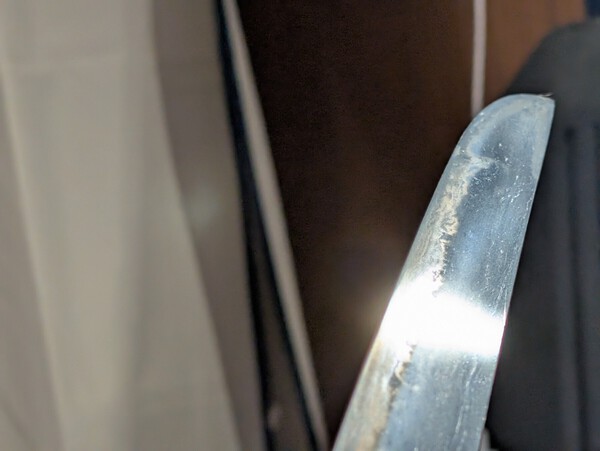
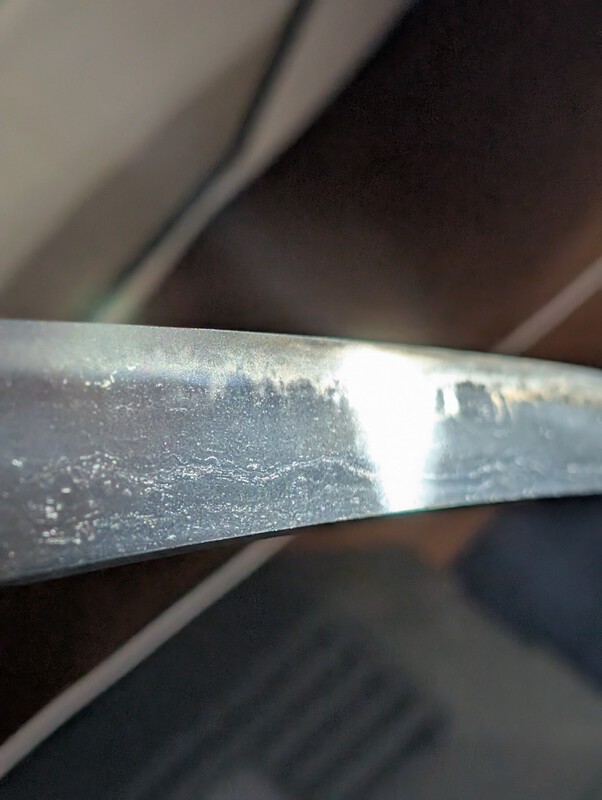

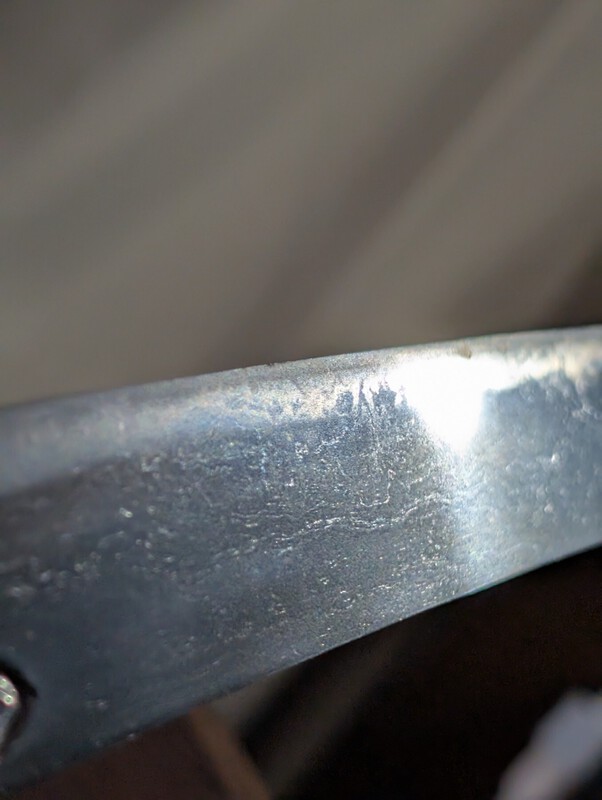
.thumb.jpg.ae406874bbe06d54295f0e9913d833c3.jpg)
.thumb.jpg.47aecf522deff6df9d24cad5cf472e6d.jpg)